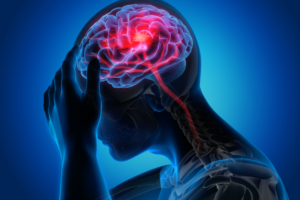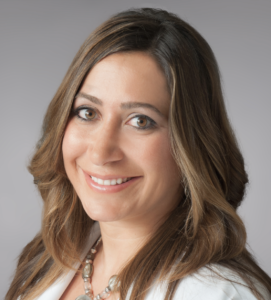Stroke survivors may see their quality of life enhanced by self-management programs, if organizers can overcome the challenges of getting this group to participate, according to a new study.
“Self-management programs may improve quality of life and self-efficacy for stroke survivors, but participation is low,” wrote the study authors, led by Amytis Towfighi, MD, associate professor of neurology (clinical scholar).
The first author on the study, published Sept. 11 in the journal Stroke (here’s the PDF) is Amy M. Lin, who earned her MD and MPH at the Keck School and is now a resident in the Department of Neurology at the Washington University School of Medicine in St. Louis.
Researchers tested a new model of care for managing stroke patients in safety-net settings, with a goal of improving risk factor control and reducing disparities. They enrolled nearly 500 people with recent stroke, most of whom were from racially/ethnically marginalized backgrounds, and offered patients a complement of services, including Chronic Disease Self-Management Program (CDSMP) workshops, clinic visits and home visits. CDSMP, a 6-week program, was led by community health workers. The sessions were held in healthcare settings and community venues such as libraries. Over time, additional elements like free transportation and financial incentives were added to boost participation.
Overall, despite incentives, only 29% of subjects participated in CDSMP. Moderate disability and more clinic/home visits were associated with participation. Key barriers to participation included difficulty taking time off work to participate; competing responsibilities (such as childcare); and competing needs (such as addressing housing and food insecurity).
“Although self-management programs can be effective, health systems offering these programs must work through key implementation barriers to ensure regular participation, particularly in socioeconomically disadvantaged populations,” Towfighi said in an email. “Key strategies for enhancing participation include developing a rapport with participants, integrating the workshops into the overall care plan, offering the programs at non-business hours, giving incentives for participation, and providing transportation. Nevertheless, unless the underlying social determinants of health hindering participation are addressed (e.g. homelessness, food insecurity), participation will remain suboptimal.”
—
Other authors on the study are Barbara G. Vickrey of Icahn School of Medicine at Mount Sinai, N.Y.; Frances Barry, Martin L. Lee, Bijal Mehta and Robert Bryg of UCLA; Monica Ayala-Rivera of the Department of Neurology at KSOM and LAC+USC Medical Center; Eric Cheng of the VA Greater Los Angeles Healthcare System; Ana V. Montoya and Jamie L. Tran of Harbor-UCLA Medical Center in Torrance; Elizabeth Mojarro-Huang and Marissa Castro of LAC+USC Medical Center; Patricia Gomez, Marilyn Corrales, Renee Johnson, Tara Dutta, Ali Razmara and Chris Ediss of Rancho Los Amigos National Rehabilitation Center in Downey; Theresa Sivers-Teixeira and Nerses Sanossian of the Department of Neurology at KSOM; Betty Shaby of Olive View-UCLA Medical Center in Sylmar; Phyllis Willis of the Watts Labor Community Action Committee; and Shlee Song of Cedars-Sinai Medical Center in Los Angeles.
This study was funded by National Institute of Neurological Disorders and Stroke (NINDS): Stroke Prevention/Intervention Research Program 1U54NS081764-01; Sub-Project ID:5155. Support for data collection using RedCap from Clinical and Translational Science Institute Grant UL1TR000124. California Community Foundation Grant: CMH-15-118096


